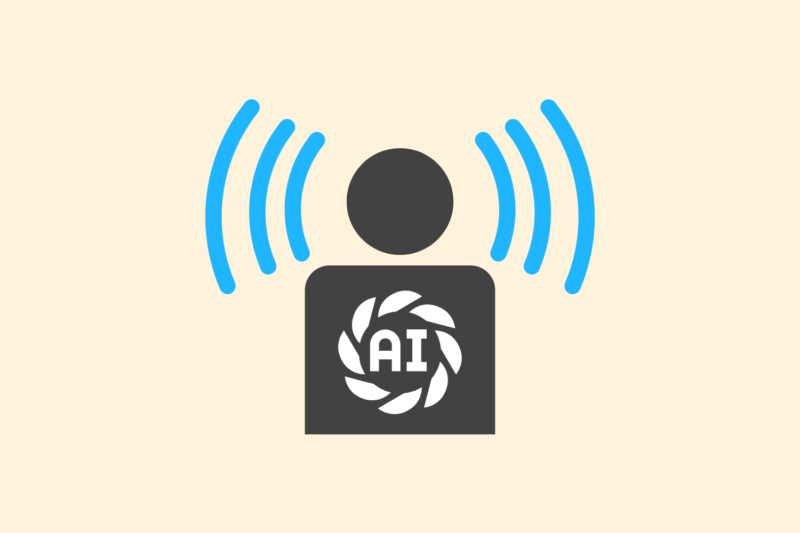The influence of user signals on AI findability

In traditional SEO, user signals have been an indirect factor for better rankings for years. Think click-through rates, time on page and bounce rate. With AI-driven search systems such as ChatGPT, Gemini and Perplexity gaining ground, I increasingly get the question: do user signals also play a role in findability within these systems?
The short answer is: yes, but different from what you are used to. The influence of user behavior on LLM-based systems is more subtle, less transparent and at the same time at least as important.
AI learns from your behavior, directly or indirectly
Language models such as GPT-4 or Claude do not by themselves have direct access to user data such as bounce rates or session duration. In systems that combine AI with search engine functionality (think Gemini or Perplexity), these signals do play a role. This happens mainly in the model’s learning process or when selecting sources.
For example, Perplexity explicitly shows what resources it selects in an answer, and tests how users respond to them: do people click through? Do they get lost? Do they consider an answer useful? That behavior influences which resources are shown more or less often in the future. This is a feedback loop of sorts, where your content is judged for relevance and usefulness.
Which user signals count?
Based on analyzing AI platforms and their behavior, there are a few clear signals that contribute to better visibility:
- Click-through rate (CTR) in generated responses: if your link is clicked more often from a citation window, the likelihood that your content will also be included in subsequent responses increases.
- Time on source page: Is your page visited often and do people stick around? Then the system recognizes your site as a useful source.
- Positive feedback: such as thumbs up when an AI reply mentions your site.
- Repeated selection of your domain: if multiple responses end in a click to your site, trust in your source increases. (1)
What I apply myself to respond to user signals
User signals don’t affect rankings in the traditional sense, but they do affect the likelihood that a language model will take up or continue to use your content. That’s why I work on these three pillars:
1. Clear, click-worthy citation texts.
I make sure that the text surrounding a link in a citation window invites a click-through. That starts with how I write the first sentence of a paragraph: clear, compelling, without empty words.
2. Page-level relevance.
When someone clicks from an AI response, the page must offer exactly what is promised. I regularly test whether the content actually matches the snippet the AI shows.
3. Combining UX and content
Good content alone is not enough. The page must also load quickly, be pleasant to read and logically structured. Anything that reduces friction indirectly increases the value of the user signal.
Getting started with SEO? Feel free to get in touch.

Differences by AI platform
Not every AI platform uses user data in the same way:
- ChatGPT (with browse function): primarily uses context and content, but OpenAI is increasingly testing with user feedback on source entries.
- Gemini (from Google): combines AI-generated output with classic Google ranking factors, including user data from Search and Chrome.
- Perplexity: Is very transparent about sources and depends on click and interaction data.
- Claude: less focused on source attribution, but more focused on reliability – that’s where domain-level reputation signals count. (2)
Summary
User signals do not determine whether your page ranks well in Google, but they do determine whether you become visible in AI answers. By being smart about UX, context and content precision, I increase the chances of content being included in citation windows and other generated outcomes.
For SEO specialists, this is the time to look beyond classic ranking factors. In the AI era, every click, every second of attention and every bit of positive interaction counts in how language models rate your content.
| # | Source | Publication | Retrieved | Source last verified | Source URL |
|---|---|---|---|---|---|
| 1 | AI Overviews Reduce Clicks by 34.5% (SEO Blog By Ahrefs) | 17/04/2025 | 17/04/2025 | 12/11/2025 | https://ahrefs.com/blog/.. |
| 2 | We Studied the Impact of AI Search on SEO Traffic. Here’s What We Learned (Semrush Blog) | 09/06/2025 | 09/06/2025 | 11/11/2025 | https://www.semrush.com/.. |
- Law, R. (17/04/2025). AI Overviews Reduce Clicks by 34.5%. SEO Blog By Ahrefs. Retrieved 17/04/2025, from https://ahrefs.com/blog/ai-overviews-reduce-clicks/
- Handley, R. (09/06/2025). We Studied the Impact of AI Search on SEO Traffic. Here’s What We Learned. Semrush Blog. Retrieved 09/06/2025, from https://www.semrush.com/blog/ai-search-seo-traffic-study/






